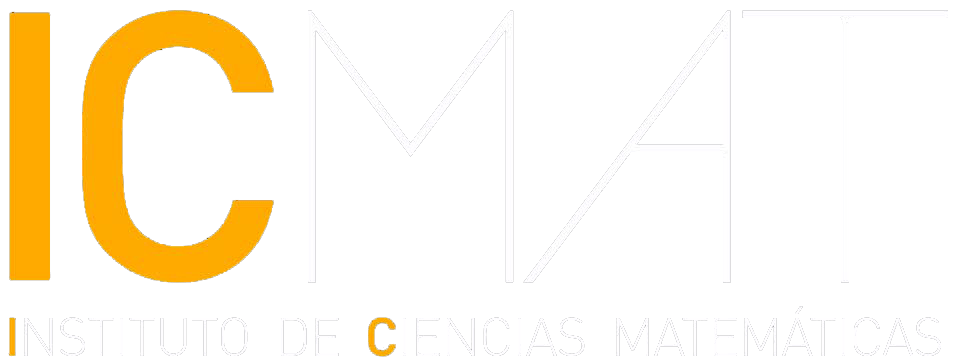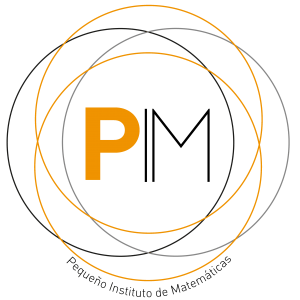Title: Channel capacities via p-summing norms.
Author(s): Marius Junge (University of Illinois at Urbana-Champaign, EE UU) & Carlos Palazuelos (Universidad Complutense de Madrid-ICMAT).
Source: Advances in Mathematics 272, 350-398.
Date of publication: February, 2015.

In the past few years operator algebra and functional analysis techniques have found very interesting applications in quantum information theory. For example, operator space techniques have been applied to the context of Bell inequalities; free probability has been shown as a very useful tool to study the classical capacity of a quantum channel, and noncommutative versions of Grothendieck’s theorem have been used for efficient approximations for quantum values of quantum games.
An important part of the work corresponding to the Marius Junge Laboratory at ICMAT is focused on this interconnection between mathematics and quantum information. In this line, in the recent paper published in Advances in Mathematics the authors have revealed a connection between the metric theory of tensor products developed by Grothendieck and the study of channel capacities, a central topic in Shannon’s information theory.
A noisy channel is defined as a positive linear map between the sender and the receiver, which preserves probability distributions. The capacity of a channel is defined as an asymptotic ratio of the number of transmitted bits to the number of the required uses of the channel to transmit those bits, when the error in the communication tends to zero. Although the main theorem in the paper is stated in a much more general context, it already reveals a beautiful relation between Shannon’s information theory and absolutely p-summing maps when it is applied to classical channels. It states that the capacity of a channel can be obtained by differentiating the p-summing norm of the channel, when this is realized as a linear map between certain Banach spaces.
The theory of absolutely p-summing maps was introduced by Grothendieck and has been exhaustively studied by many mathematicians as one of the cornerstones of Banach space theory. Indeed, absolutely p-summing maps have been shown to be an extremely useful tool for studying geometrical properties of Banach spaces and their relation with probability theory and harmonic analysis. Pisier recently generalized the theory of absolutely p-summing maps to the context of operator spaces, a noncommutative version of Banach spaces, by means of the so-called completely p-summing maps.
Considering the previous relation between absolutely p-summing maps and the capacity of a classical channel, one might wonder if completely p-summing maps could play an analogous role in the quantum (so, noncommutative) version of Shannon’s theory; that is, in quantum information theory. In this new context, quantum channels are considered, which are completely positive and trace preserving maps between matrix algebras; it is then possible to study the capacity of this channel to transmit classical information (bits) as well as its capacity to transmit quantum information (qubits). Moreover, a surprising phenomenon appears in the quantum scenario that is called quantum entanglement. Roughly speaking, entanglement allows two systems to be correlated so that performing some operations in one of them can instantaneously modify the state of the other. It is therefore not surprising that the sender and the receiver of a channel can use an entangled state to increase the capacity. In this case, we talk about the capacity of the channel with assisted entanglement. The main result states that the classical capacity of a quantum channel with assisted entanglement can be obtained by differentiating the completely p-summing norm of the channel, when this is realized as a linear map between certain matrix algebras.
The work establishes a bridge between two theories, a priori completely disconnected, which are very active in the corresponding fields. This will allow us to use operator space techniques to study different questions in the context of quantum channels. Moreover, our current research is also exploring the converse direction; namely, how techniques from quantum channel theory can be applied to the theory of operator algebras and operator spaces.
About the authors:
Carlos Palazuelos was born in Madrid (Spain) in 1979. He obtained a PhD in Mathematics at the Universidad Complutense de Madrid in 2009. He spent one year (2010) at the University of Illinois at Urbana-Champaign as a visiting assistant professor. In 2011 he joined the CSIC-ICMAT on a Juan de la Cierva contract. Since December 2013, he has been working on a Ramon y Cajal contract at the Universidad Complutense de Madrid-ICMAT.
The main topics of his research are functional analysis and quantum information theory. Most of his work is focused on the applications of the operator space theory (a noncommutative analogue to Banach space theory) to quantum information theory; in particular, to the theory of Bell inequalities, quantum entanglement and quantum channels. Part of this work is very closely related to certain problems in the field of operator algebras. Some of the works in this line can be found in journals like Communications in Mathematical Physics, Advances in Mathematics, Physical Review Letters and Computational Complexity. Another important line of Carlos’ research work is noncommutative Harmonic Analysis. Specifically, some of the most recent works by Carlos are about hypercontractivity in von Neumann algebras.
Marius Junge was born in 1962 in Hannover, Germany. He defended his Ph.D. Thesis at Christian-Albrechts Universität at Kiel, under the supervision of Herman König. In 2007, Junge received a full professorship at the University of Illinois at Urbana-Champaign.
Marius Junge is known worldwide for his work in quantum probability, operator space theory, noncommutative harmonic analysis and more recently quantum information theory. Of special interest are his contributions on noncommutative maximal Doob’s and ergodic theorems, the Grothendieck program for von Neumann algebras, the cb-embedding theory for noncommutative Lp spaces, and more recently on Fourier multipliers for group von Neumann algebras and violation of Bell inequalities.
The aim of the project is to include the quantum mechanical perspective in the context of harmonic analysis and information theory. We are interested in extending classical estimates for Fourier multipliers to group von Neumann algebras and other noncommutative scenarios. Among other topics, this includes Hörmander-Mihlin multiplier type theorems, Calderón-Zygmund and Littlewood-Paley methods, hypercontractivity and log-Sobolev inequalities, transference techniques… Furthermore, some of these problems lead us to new viewpoints in classical harmonic analysis. Regarding quantum information, we will be focussing on quantum channels, Bell inequalities and entanglement theory and quantum games via operator spaces.


